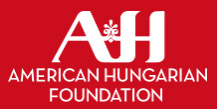William Penn Life, 2019 (54. évfolyam, 2-5. szám)
2019-04-01 / 4. szám
Tibor s Take easygoing and beloved longtime manager "Red" Schoendist with the no nonsense totalitarian Vern Rapp. From day one of spring training, Rapp and Hrabosky did not see eye-to-eye on many things involving the Cardinals, especially on how a baseball team should be controlled. Rapp felt the team was sloppy and did not represent the clean-cut mold he held for the sport and its players. His first edict was to have all players be clean shaven and have short manicured haircuts. This meant the biggest component of The Mad Hungarian's mystique would be lost. Hrabosky told reporters: "How can I intimidate batters if I look like a golf pro?" and equated Rapp's mustache ban with sending a solider "to war without a rifle." Hrabosky's plea to keep his Fu Manchu fell upon deaf ears as the team owners liked the way Rapp ran the clubhouse with the tight discipline commonly used by minor league ball clubs. Hrabosky demanded to be traded, and by season's end, his wish was granted. He was dealt away to cross-state rival, the Kansas City Royals. Interestingly, Rapp was replaced early the next season as the owners realized his managerial style was not what the Cardinals needed. The Mad Hungarian was able to regrow his menacing facial hair with Kansas City, but unfortunately, his rocket speed fastball was losing its zip. A1 continued on with his fan-favorite pitching ritual, but the dominant performances of the early 1970s never returned. From there, he was traded to Atlanta, and in 1982, the Braves released him. In 1983, he signed on with the Chicago White Sox but retired before spring training ended. As mentioned earlier, The Mad Hungarian loved the outdoors and horses. With money earned through his baseball career, he purchased a horse farm in Georgia. There, he ran a stable specializing in raising and training Arabian show horses. With his wife as co-owner, they operated a very productive facility for several years. At that time, Hrabosky hired a Hungarian/Romanian exile named Jeno Cotan (1941-1998) to operate the equestrian side of the business. Cotan, was a respected horseman and trainer, and his talents helped to raise the dressage quality standards of the United States during the 1980s and 1990s. Like many American-Hungarians, Hrabosky has the ability to converse with anyone and possesses a very likeable personality. Those qualities, along with his popularity among St. Louis Cardinals fans, led the Cardinals to hire him as the team's broadcast color commentator in 1985. Soon after, he and his wife realized that commuting to A follow-up to last month’s Take In addition to the famous artists mentioned in last month’s discussion of Hungarian musicians and composers, try researching some lesser-known individuals such as Miklós Kocsár, István Párkai, Sándor Szokolay, Attila Bozay, Zsolt Durkó, László Sáry, Zoltán Jeney, Ferenc Farkas, Frigyes Hidas, Leo Weiner, László Vidovszky, György Rank and László Lajtha. Good Luck with your research! - Tibor their Georgia horse farm and being an announcer was too much, so the farm was sold and the family set up permanent residence in St. Louis. (Cotan continued to work for several other famous horse/breeding farms and continued to upgrade their individual dressage programs until his untimely passing in 1998.) This spring, Hrabosky began his 34th season as a Cardinal announcer. In contrast to his tough and rough pitching style, he is a humble and personable family man who has four adult children and two grandsons. He continues to work with horses as a hobby, is involved with several charities, and speaks at schools and clubs, sharing inspiring thoughts and antidotes from his playing days. During rain delays, he will entertain the broadcast audience by reverting to old verbiage from his relief pitching heydays of the 1970s. For a while, he also owned and operated A1 Hrabosky's Ballpark Saloon. Yelp reports that the saloon is closed now, but for years it was one of the more famous watering holes outside Busch Stadium. Hrabosky's legacy is worth a couple of hours of research alone. I suggest you do a simple websearch and bring up old media clips of him pitching or being interviewed as each are quite entertaining, especially when he charges off the mound towards a batter. Down the road, I would like to share information about two more American-Hungarians who played in the 1980s through the 2000s: Chris Sabo and Charlie Nagy. If you know of a MLB player who comes from Magyar lineage, let me know of him through email, letter or the WPA Home Office. Boldog Húsvéti! Happy Easter! Tibor II Tibor Check, Jr., is a member of Branch 28 and an attorney working in Washington, D.C. WILLIAM PENN LIFE 0 April 2019 0 7
